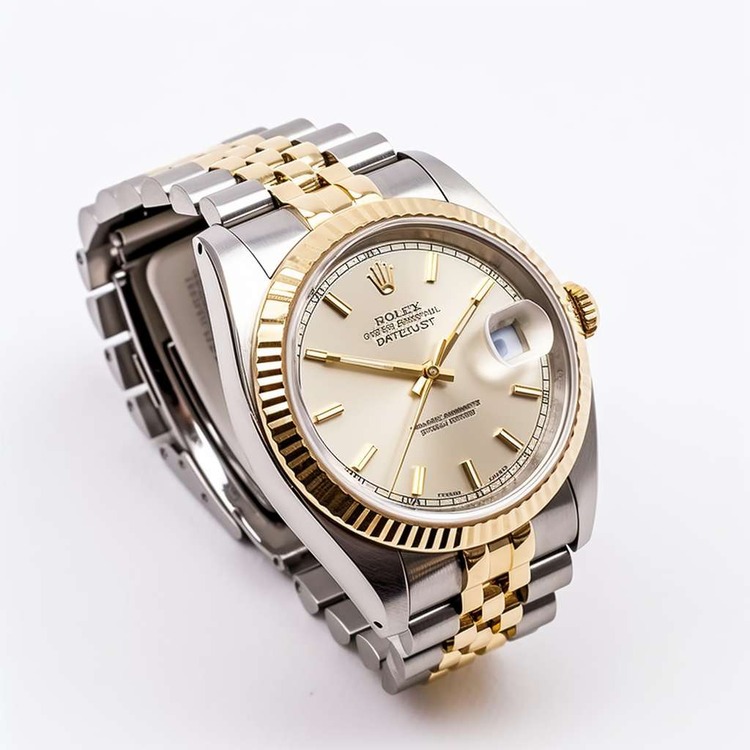Learn About Police Seized Watch Auctions & Key Considerations
Police seized watch auctions offer unique opportunities to acquire luxury timepieces at potentially lower prices than retail. These events feature watches confiscated during criminal investigations and legal proceedings, subsequently sold to recoup costs or generate revenue for law enforcement agencies. Understanding how these auctions work and what to consider before participating can help collectors make informed decisions.

Police seized watch auctions represent an intriguing alternative market for luxury timepiece enthusiasts. These auctions feature watches that have been confiscated by law enforcement agencies during criminal investigations, seized for unpaid taxes, or acquired through abandoned property claims. While they can offer significant discounts on high-end watches, these auctions also come with unique considerations that potential buyers should understand before participating. This article explores the world of police seized watch auctions, their benefits, potential drawbacks, and important factors to consider before making a purchase.
What Are Police Seized Watches?
Police seized watches are timepieces that have been confiscated by law enforcement agencies through various legal means. These watches typically enter government possession through criminal investigations, where assets may be seized as evidence or through asset forfeiture laws. Additionally, watches may come from tax authority seizures when individuals or businesses fail to pay taxes, or from unclaimed property divisions when items are abandoned or left unclaimed in safety deposit boxes. Once legal proceedings are complete and ownership has been transferred to the government, these items are often liquidated through public auctions to recoup funds for government agencies or victim restitution programs.
The quality and condition of police seized watches vary dramatically. Some may be nearly new luxury timepieces from brands like Rolex, Patek Philippe, or Omega, while others might show significant wear or require repairs. Unlike traditional watch retailers, these items are typically sold “as-is” with limited information about their service history or authenticity verification.
Benefits of Police Seized Watch Auctions
The primary appeal of police seized watch auctions is the potential for significant cost savings. Luxury watches that might retail for thousands or tens of thousands of dollars can sometimes be acquired for a fraction of their market value. This price advantage stems from the government’s primary goal of liquidating assets rather than maximizing profit. For collectors and enthusiasts operating on a budget, these auctions represent an opportunity to acquire timepieces that might otherwise be financially out of reach.
Another benefit is the possibility of finding rare or discontinued models that are no longer available through authorized dealers. Criminal enterprises sometimes traffic in luxury goods, and watches seized from such operations may include limited editions or vintage pieces with historical significance. Additionally, these auctions occasionally feature unique watches with interesting backstories, adding an element of intrigue to the acquisition.
Pros and Cons Of Police Seized Watches
While the potential savings are attractive, police seized watch auctions come with several notable drawbacks. Perhaps the most significant concern is authenticity verification. Unlike purchasing from authorized dealers or reputable secondary market retailers, government auctions rarely offer guarantees regarding authenticity. The risk of purchasing sophisticated counterfeits exists, particularly with high-value luxury brands that are frequently targeted by counterfeiters.
Service history represents another major concern. Most seized watches come with limited or no documentation regarding previous maintenance, repairs, or parts replacements. This lack of history can make it difficult to assess the true condition of the watch’s movement and may lead to unexpected repair costs after purchase. Additionally, warranties from original manufacturers typically do not transfer through these channels, leaving buyers responsible for any future service needs.
On the positive side, these auctions can be exciting venues for discovering unexpected treasures at competitive prices. The thrill of the auction process itself appeals to many collectors, and successful bidders often enjoy sharing the unique acquisition stories behind their timepieces. For those willing to accept some risk and perform due diligence, the value proposition can be compelling.
Key Considerations Before Getting Police Seized Watches
Before participating in a police seized watch auction, potential buyers should prepare thoroughly. First, research the specific auction house or government agency conducting the sale to understand their reputation and procedures. Some agencies have more rigorous authentication processes than others, which can reduce (but not eliminate) the risk of purchasing counterfeits.
Establish a maximum budget before bidding begins and factor in additional costs beyond the hammer price. These may include buyer’s premiums (often 10-25% of the winning bid), taxes, shipping costs, and potential service needs after purchase. Remember that the initial discount may be offset by these additional expenses.
Whenever possible, arrange to inspect watches in person before bidding. Many government auctions offer preview periods where potential buyers can examine items closely. During inspection, look for signs of authenticity such as proper engravings, expected weight, and quality of finishing. If in-person inspection isn’t possible, request detailed photographs and ask specific questions about the watch’s condition.
Police Seized Watch Auctions Insights and Pricing
Pricing at police seized watch auctions can vary dramatically based on several factors, including the watch brand, model, condition, and auction attendance. Generally, buyers might expect discounts ranging from 30% to 70% off retail prices, though rare or highly desirable pieces may command prices closer to market value due to competitive bidding.
Here’s a comparison of typical pricing across different auction platforms for popular luxury watch brands:
| Auction Platform | Average Discount | Authentication Process | Buyer’s Premium |
|---|---|---|---|
| US Marshals Service | 40-60% | Basic visual inspection | 15-20% |
| Police Property Rooms | 50-70% | Minimal | 10-15% |
| County Sheriff Auctions | 40-65% | Varies by department | 10-25% |
| IRS Seized Asset Auctions | 30-50% | More thorough | 15-20% |
| Treasury Forfeiture Auctions | 35-55% | Moderate | 15-20% |
Prices, rates, or cost estimates mentioned in this article are based on the latest available information but may change over time. Independent research is advised before making financial decisions.
Frequency and accessibility of these auctions vary by location. Major metropolitan areas typically host more frequent events with larger selections, while rural areas may have sporadic offerings. Many government agencies now conduct online auctions, making these opportunities more accessible to a wider audience. Popular platforms include GovDeals, PropertyRoom.com, and official government websites for agencies like the US Marshals Service or state treasury departments.
Successful bidding strategies include thorough research of comparable watches on the secondary market to establish fair value, setting firm maximum bids to avoid auction excitement leading to overpayment, and considering less popular auction times when competition may be reduced. Many experienced buyers also recommend focusing on less prestigious but still high-quality watch brands, where the risk-reward ratio may be more favorable.
In conclusion, police seized watch auctions represent a unique opportunity for watch enthusiasts to acquire luxury timepieces at potentially advantageous prices. However, these opportunities come with significant risks regarding authenticity, condition, and long-term value. Prospective buyers who approach these auctions with careful research, realistic expectations, and a willingness to perform due diligence may find them to be rewarding venues for building a watch collection. For others, the peace of mind that comes with traditional retail channels may outweigh the potential savings offered through these alternative marketplaces.




